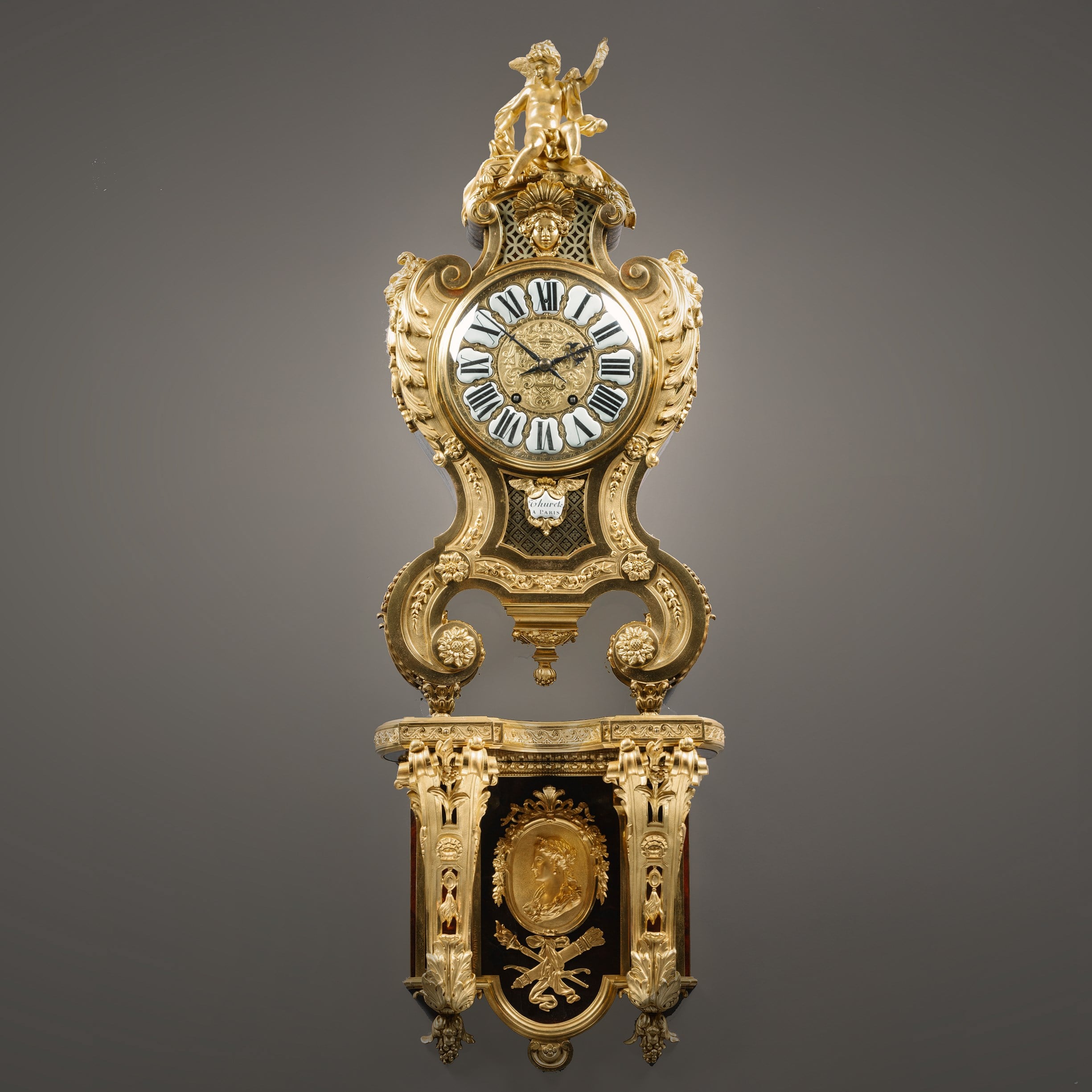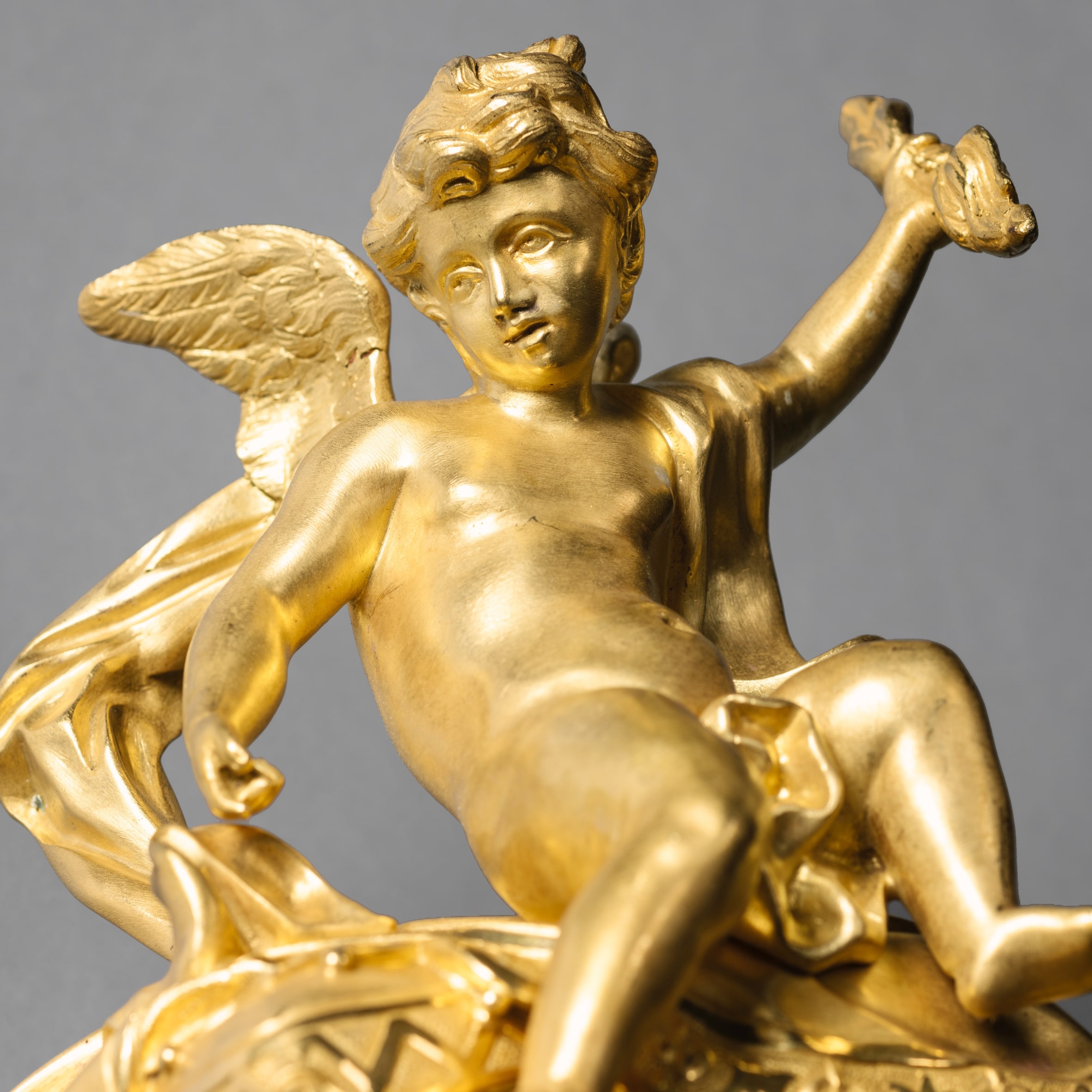Etienne Maxant
A Regence Style Gilt-Bronze and Boulle Marquetry Inlaid Grand Cartel de Applique, In the Manner of André-Charles Boulle
£45,000
A Monumental Regence Style Gilt-Bronze and Boulle Marquetry Inlaid Grand Cartel de Applique, In the Manner of André-Charles Boulle. The eight-day twin-train...
Dimensions
Height: 107 cm (43 in)Width: 36 cm (15 in)
Depth: 17 cm (7 in)
Description
A Monumental Regence Style Gilt-Bronze and Boulle Marquetry Inlaid Grand Cartel de Applique, In the Manner of André-Charles Boulle.
The eight-day twin-train movement, striking on a bell.
The dial with a porcelain cartouche inscribed ‘Thuret a Paris’.
The movement stamped ‘Etienne Maxant’ and ‘12775: 8.1 EM’.
This impressive and large cartel clock has a circular, arabesque chased, brass dial with Roman numerals on enamelled cartouches, with engraved Arabic seconds and polished steel hands. The dial sits within a waisted case, with large acanthus mounted gilt-bronze volutes, surmounted by a palmette mascaron and a figure of Jupiter as a child and an enamel cartouche signed ‘Thuret A PARIS’. It is supported on large foliate mounted scrolls and decorated to the sides with Boulle marquetry panels and lion mask mounts. The bracket, or console ensuite is modelled with openwork uprights and volutes framing a woman’s profile in the antique, surmounting a military trophy on a Boulle marquetry inlaid background.
An eighteenth-century version of this clock by ‘Mynuel A Paris’ (Maitre 1720) is illustrated by Tardy in ‘La Pendule Francaise’, 1ere partie, p. 141.
The clock movement is by the important 19th century clockmaker Etienne Maxant, who supplied movements to many of the most important ébénistes of the day including Francois Linke. Nearly all of Linke’s longcase clocks have movements by Maxant, including his versions of the famous ‘regulateur de parquet’ after the model by Lieutaud and Caffieri.
Maxant is recorded as working in Paris from before 1870 as Maxine fils. He is then recorded as Etienne Maxant working at 28, Rue Debelleyme which was also the workshops of the clock makers Pierre & Alfred Drocourt. By 1888 Maxant is recorded at 4, Rue Saintonge and 113, Rue Vieille-du-Temple and by 1907 was succeeded by Charles Reguier and J. Lefebvre.
French, Circa 1890.
Date
Circa 1890
Origin
France
Signature
The movement stamped 'Etienne Maxant'.
YOU MAY ALSO LIKE
-
£48,000 Add to cart

After Martin Carlin
A Louis XVI Style Mahogany Cartel Clock and Barometer
-
£34,000 Add to cart

Sèvres (Style)
A Gilt-Bronze Wall Clock and Matching Barometer with Sèvres Plaques
-
£24,000 Add to cart

After Andres Charles Boulle
A Fine Louis XIV Style Gilt-Bronze Mounted Boulle Marquetry Barometer




















 Print
Print